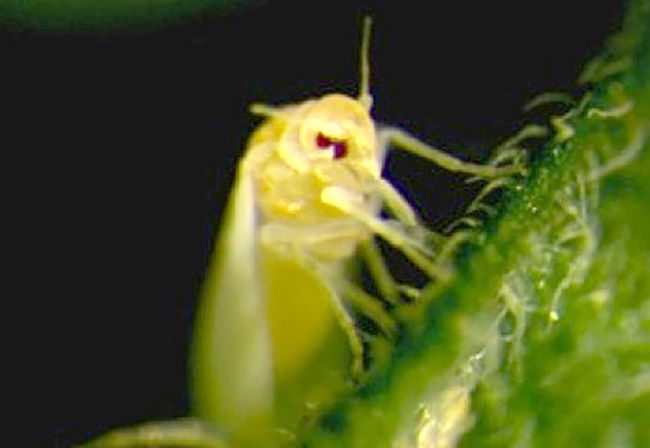Oct 11, 2016Whitefly populations troubling Georgia vegetable growers
Whitefly populations in south Georgia have exploded over the past several weeks, troubling vegetable producers during the fall growing season, according to University of Georgia horticulturist Tim Coolong.
Coolong said growers must be up to date on spray programs, though combating whitefly populations of this magnitude will still be difficult. In some cases it might be impossible to to stop whiteflies before they spread viruses.
“Spraying for whiteflies multiple times per week has been somewhat effective,” Coolong said. “There are a number of products out there that can be injected through drip irrigation or sprayed, but even those methods have their limits. When growers do see viruses, they need to be aware and be able to identify (the viruses).”
Whiteflies feed on plants by sucking juice out of the leaves. They can transmit viruses that are devastating to vegetable crops. Babu Srinivasan, an entomologist at the University of Georgia Tifton Campus, said that the silvering of leaves in cucurbits is a problem associated with feeding damage. The flies suck chlorophyll and other cell contents from leaves, which could reduce fruit set.
“Aside from silvering of leaves in cucurbits, whiteflies cause irregular ripening of tomatoes, which reduces market value and is only evident after harvest,” Srinivasan said. “The most important thing, however, is that they can actually transmit viruses.”
Cucurbit leaf crumple virus and tomato yellow leaf curl virus are the two most common viruses transmitted by whiteflies this year.
Srinivasan said whiteflies are hard to control.
“Because they have multiple hosts, are very small and capable of flying – and the fields are located very close to each other – there is no practical way to completely get rid of them,” Srinivasan said.
There are some ways to mitigate feeding damage, according to Srinivasan. He said that growers could use reflective mulch to make it harder for the whiteflies to land on the plants. The seedlings can also be drenched with insecticides before being planted.
Srinivasan said that climate and weather patterns are huge reasons why whitefly populations are so high. He said the warm winter and lack of rainfall in early summer could be reasons for this explosion.
“Their populations were not sufficiently suppressed to the extent of a regular winter,” Srinivasan said. “Also, we had very few rainy days in July. Rainfall is a limiting factor for whiteflies. A lot of rainfall knocks down their numbers quite a bit. The conditions were just right for whitefly populations to skyrocket.”
Srinivasan said that it’s extremely important for growers to choose their management tactics.
“The problem with managing whiteflies on vegetable crops is that you’re operating with a zero threshold,” Srinivasan said. “We can’t afford to have any whiteflies at all. It only takes one whitefly on a plant to transmit the virus.”
— Kyle Dawson, University of Georgia
Source: University of Georgia FACES

















